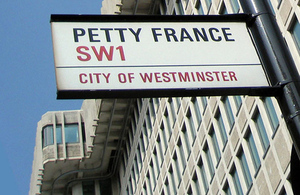
The Secretary of State has announced an extension of up to six months to Peter Clarke's term of office as Her Majesty's Chief Inspector of Prisons, commencing 1 May 2020.
A campaign to recruit a new Chief Inspector has concluded without an appointment, and a new campaign will be run. Mr Clarke's extension will enable appropriate oversight and scrutiny at a critical time for HMPPS, until such point when the new appointee is confirmed.
Her Majesty's Chief Inspector of Prisons is a Royal appointment. Extensions are regulated by the Commissioner for Public Appointments, and have been made in line with the Governance Code on Public Appointments.
HMIP is an independent inspectorate, reporting directly to Ministers, but operating independently of Government and the services under its scrutiny. HMCIP has a duty to report on conditions for and treatment of those in prisons, young offender institutions, secure training centres, police and court custody suites, customs custody facilities and military detention in England and Wales, and immigration detention facilities within the UK.
Biography
Peter Clarke was appointed to the role of Her Majesty's Chief Inspector of Prisons on 1 February 2016. Mr Clarke is a retired senior police officer, who served in the Metropolitan Police Service for more than 30 years. He rose to the rank of Assistant Commissioner and also served as Head of the Anti-Terrorist Branch and National Co-ordinator of Terrorist Investigations. In 2014 he was appointed Education Commissioner for Birmingham to conduct an inquiry into the allegations concerning Birmingham schools arising from the "Trojan Horse" letter. Mr Clarke also served on the Board of the Charity Commission until January 2016.






